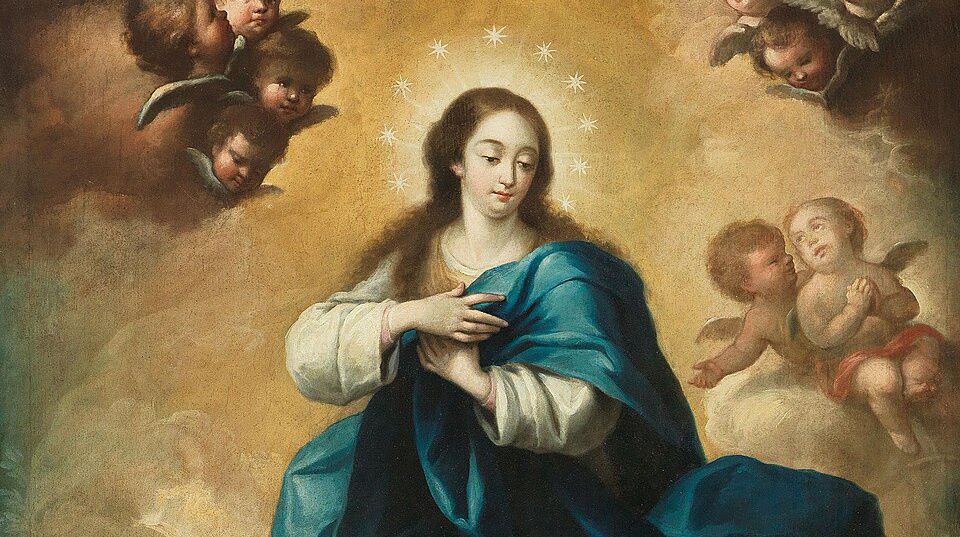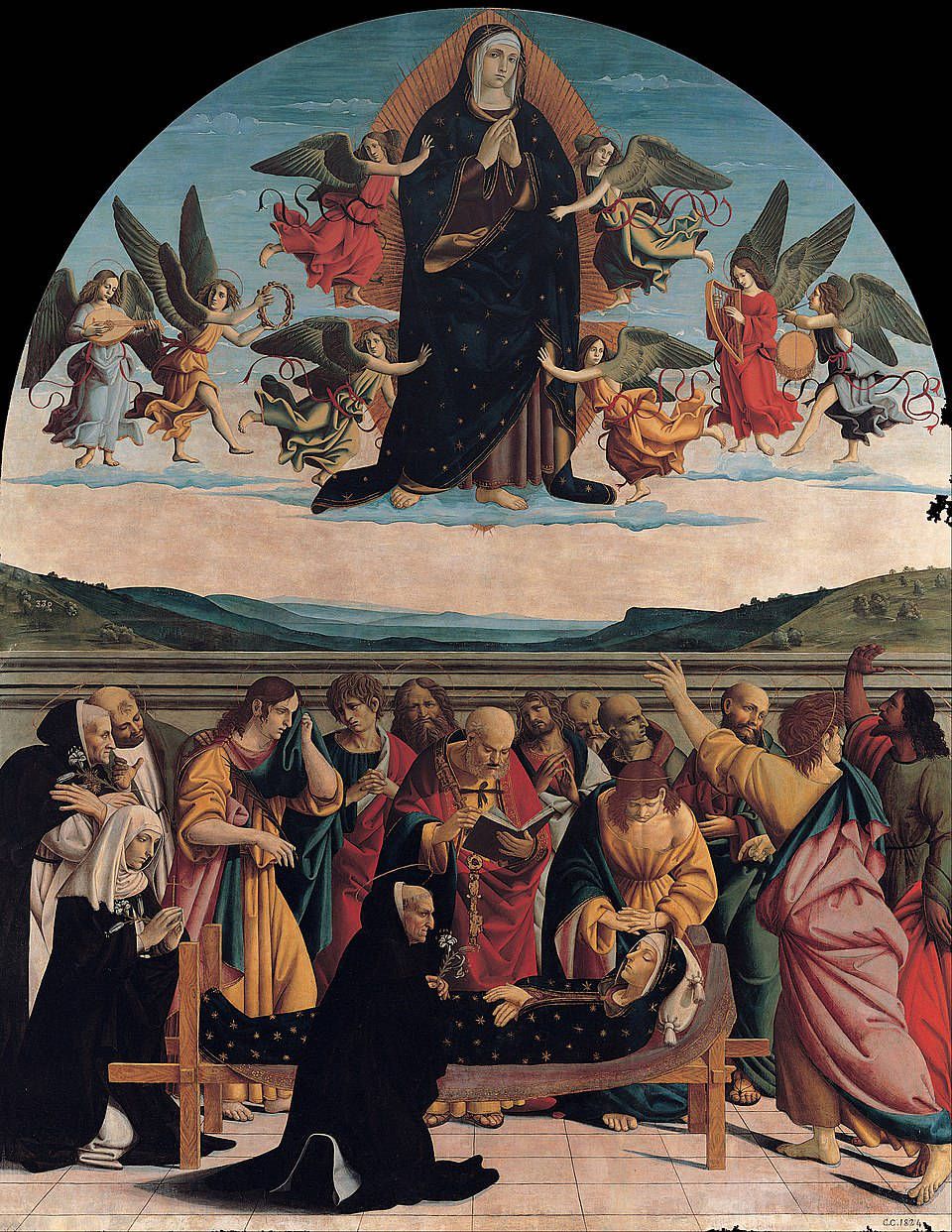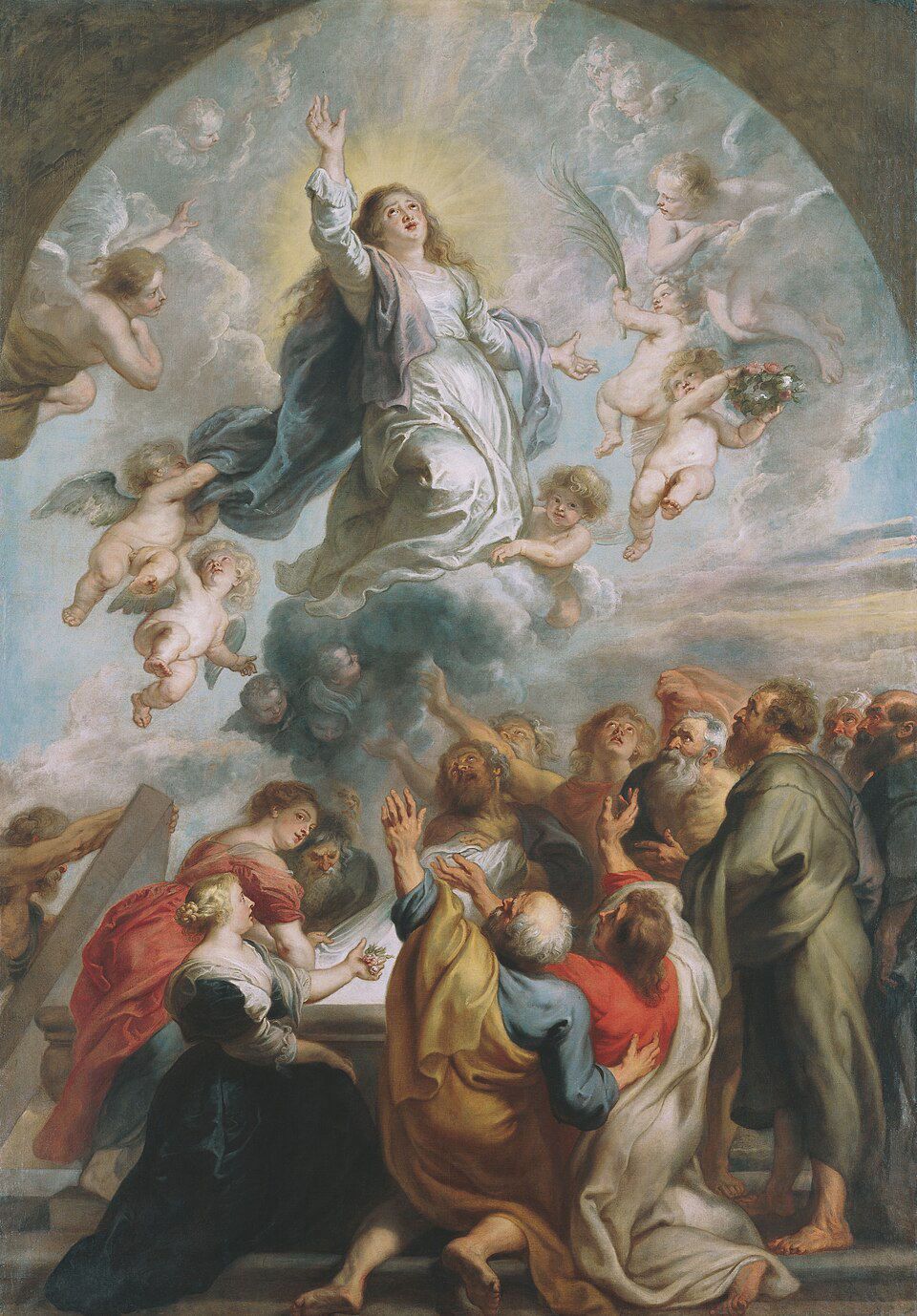
. . . since [Christ] could adorn [Mary] with so great a gift as to keep her unharmed by the corruption of the tomb, it must be believed that he actually did this [DS 3900]. . . . We pronounce, declare, and define that the dogma was revealed by God, that the Immaculate Mother of God, the ever Virgin Mary, after completing her course of life upon earth, was assumed to the glory of heaven both in body and soul [DH 3903].
— Pius XII, Apostolic Constitution Munificentissimus Deus (November 1, 1950)
The Roots of the Belief in Scripture and Tradition
The theological reasoning of the Church Fathers and theologians regarding the Assumption finds its ultimate foundation in Sacred Scripture. Theologians point to several key passages that, when viewed through the lens of Tradition, support the doctrine. These include:
- Genesis 3:15, which promises a woman and her offspring will be united in victory over the serpent. In the Church’s understanding, Mary is this woman, and her complete union with her Son, Jesus, in his victory over sin and death implies her sharing in his bodily glorification.
- Luke 1:28, where the Angel Gabriel greets Mary as “full of grace.” This fullness of grace, it is argued, should correspond to a fullness of glory, which includes the preservation of her body from the corruption that follows sin.
- Revelation 12:1, which describes “a woman clothed with the sun, with the moon under her feet, and on her head a crown of twelve stars.” Many exegetes and theologians see in this figure a reference to Mary glorified in heaven.
While these scriptural passages provide a foundation, the most explicit testimony comes from the living Tradition of the Church. For the first three centuries, there were no direct references to Mary’s final destiny. However, by the fourth century, St. Ephrem suggested that Mary’s body did not undergo corruption, and St. Epiphanius was the first to explicitly discuss the possibility of her Assumption. From that point on, the belief grew. Later Church Fathers, such as St. Andrew of Crete and St. John of Damascus, became nearly unanimous in their teaching on the Assumption, grounding it in Mary’s divine maternity, her perpetual virginity, and her complete holiness.

Theological Arguments for the Assumption
Over centuries, theologians have articulated several arguments of fittingness that show how the Assumption harmonizes with other revealed truths about Mary.
- Her Immaculate Conception. The Church believes Mary was conceived without original sin. Because of this unique privilege, she won a complete victory over sin. It was therefore fitting that this victory should extend to the consequences of sin, particularly the corruption of the body after death. The redemption of her soul from original sin demanded a corresponding, anticipated redemption of her body from the penalty of death.
- Her Divine Maternity. Mary is the Mother of God; the body of Jesus was formed from her own. It seems impossible to imagine that the body which conceived, bore, and nursed the Lord would be left to suffer the decay of the tomb. It was fitting that Christ, out of filial love, would preserve his Mother’s body from corruption and bring her to heaven.
- Her Perpetual Virginity. Mary, who conceived and gave birth while remaining a virgin, was preserved from physical corruption in life. It is therefore fitting that her body, which remained intact, would also be preserved from the corruption of the grave and assumed into the incorruptible life of Heaven.
The Witness of the Liturgy
The Church’s public worship, or liturgy, has long been a powerful witness to its faith. One of the clearest testimonies to the belief in the Assumption is the ancient feast that began in the East around the sixth century known as the Koimesis or Dormition (“Falling Asleep”) of Mary. This feast commemorated her passing, which evolved to celebrate her death and subsequent glorification. This festival spread from the East to Rome, where in the seventh century it was established as the solemn feast of the Assumption of Mary. By the eighth century, it was a universal celebration throughout the West, signifying not just a historical event, but a salvific reality that was an object of faith and worship. This ancient belief is also reflected in countless churches dedicated to the Assumption and in devotions like the Rosary, which includes the Assumption as one of its Glorious Mysteries.

A Question of Death: Did Mary Die?
A question often asked is whether Mary actually died. The formal definition of the dogma intentionally does not settle this question, stating only that her Assumption occurred after “the course of her earthly life was finished.”
There are two primary theological positions on this matter:
- The Mortalist View: This is the near-unanimous opinion of theologians and saints. It holds that Mary did die. The arguments for this position are strong. For over a thousand years, the Church peacefully believed in her death, a belief reflected in ancient historical and liturgical sources. Theologically, since Mary was perfectly united to her Son, it was fitting for her to share in his death before sharing in his Resurrection. Her death would not have been a penalty for sin (which she never had) but a natural consequence of her human condition, received from Adam.
- The Immortalist View: A minority of theologians argue that Mary did not die. They reason that since death is a punishment for original sin and Mary was immaculately conceived, she was not subject to the law of death.
Although the question remains open, the weight of tradition and theological reasoning strongly supports the belief that Mary experienced death, not as a defeat, but as her final conformity to her Son, Jesus, before being raised to glory.
The Meaning of the Assumption Today
The Assumption of Mary is more than just a historical or theological point; it is a source of profound meaning for Christians.
- Union with Christ. It is, first and foremost, the coronation of all the graces she received. It signifies her complete and total union with her Son—if she was associated with him in his suffering, it was fitting she be united with him in his glory.
- Beacon of Hope. The Assumption of the Blessed Virgin is understood as a unique participation in her Son’s Resurrection and an anticipation of the resurrection of other Christians. In this mystery, Mary stands as a model and first fruit of the Church. Her glorification in body and soul is a preview of the destiny that awaits all the faithful at the end of time. She is the image and beginning of the Church as she is to be perfected in the world to come. For this reason, Mary’s Assumption is a beacon of hope. It shows that the path of imitating Christ is possible and secure. Her glorification is a firm hope for our own salvation, which is why she is called our hope and the cause of our joy.